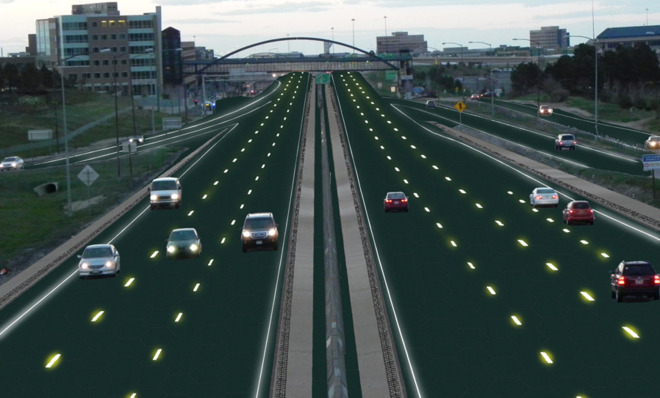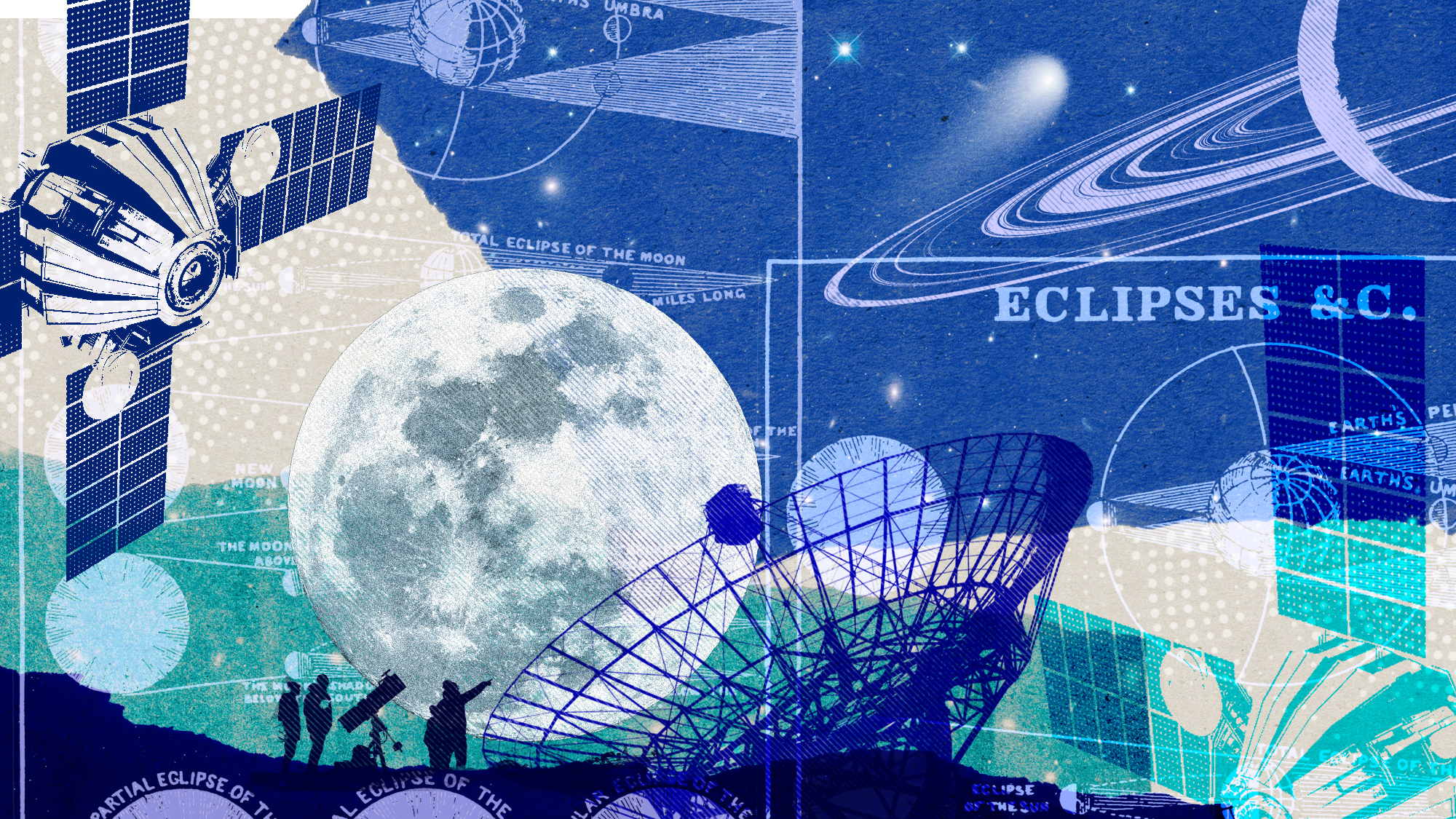Solar roads are more practical than they sound
Don't write off what you don't know

In August 1901, after a difficult month testing their glider in Kitty Hawk, North Carolina, Wilbur Wright was inclined to give up. On the train back to Dayton, Ohio, he told his brother Orville that "not within a thousand years would man ever fly."
The Wright brothers' critics were hugely skeptical of them, too. After all, the notion that humans might take to the skies seemed fantastical and utopian at the time. Critics cried "Icarus!" European newspapers were derisive; a French one called the brothers "bluffeurs" (bluffers).
But the brothers continued experimenting, and of course, Wilbur proved his critics (and himself) incredibly wrong. In December 1903, the brothers made their first powered flight, and the rest is history.
The Week
Escape your echo chamber. Get the facts behind the news, plus analysis from multiple perspectives.

Sign up for The Week's Free Newsletters
From our morning news briefing to a weekly Good News Newsletter, get the best of The Week delivered directly to your inbox.
From our morning news briefing to a weekly Good News Newsletter, get the best of The Week delivered directly to your inbox.
It has often been fashionable to try to trash new ideas and inventions, especially those like powered flight that garner widespread public interest. So it's hard to be surprised at the surge of criticism directed at Solar Roadway's vision to turn America's roads into power-generating solar panels. The brainchild of Scott Brusaw, these "solar roads" could generate three times the energy the U.S. uses in a year — while reducing greenhouse gas emissions by 75 percent — if they replaced all of America's roads, sidewalks, bike lanes, etc. And the company just raised over $1.8 million in crowd funding on IndieGoGo. When I told Solar Roadways' Scott Brusaw that I had been looking online for criticism of his idea he laughed and told me "you didn't have to look far."
"The solar roadway is a terrible idea" writes Scott Torchinsky at Jalopnik, citing the views of David Forbes, an engineer who works with radio telescopes. Forbes worries about the cost, citing the fact that solar cells and LEDs are both highly expensive, while plain asphalt is cheap. He worries about the durability of the surface and whether the roads' displays could be hacked. He cites the fact that less sunlight will be absorbed by the cells than in a typical solar panel, as the glass is four times thicker. He even argues that driving at high speeds over the surface could result in a high-pitched whining sound.
Other critics have said they just don't see the point — a YouTube user put together a 28-minute video critiquing the idea. He argued:
Solar panels under the road is a bad idea from the start. If they are under the roads, they are hard to maintain. They will have reduced light from parked cars etc. They are fragile. Not really congenial to the conditions you are likely to get on a road. In many ways building a shed over the road, or just having solar panels by the side of the road is a far better idea.
He adds that driving over glass will grind away the surface and worries that power transmission costs will make much of the energy generated useless.
A free daily email with the biggest news stories of the day – and the best features from TheWeek.com
Brusaw points out that most of these arguments have already been addressed in the company's FAQ section.
But the really strange thing about a lot of this rampant criticism is that Solar Roadways aren't really dependent on unproven technology, the way the Wright brothers' attempts at powered flight were. It's not like Scott and Julie Brusaw have claimed they can invent human teleportation. Tempered glass technology already exists, and many large companies beside Solar Roadways are already spending lots of money researching even stronger glass technologies, like Sapphire Glass. The solar cells also already exist, and are rapidly decreasing in cost and increasing in efficiency. Advanced and highly efficient battery technologies for energy storage are emerging.
So this isn't some wild utopian fantasy founded on untested or undeveloped technology. This is a bringing together of existing technologies. Ambitious, yes, but the Brusaws' small protoype — built as part of a contract with the Federal Highways Agency — is already generating electricity. Their pictures show a tractor being driven over it, and load testing at civil engineering labs showed that the panels can handle more than 250,000 lbs, over three times the legal limit (80,000 lbs) for a semi-truck. Tests have shown their textured glass can stop a car going 80 mph on a wet surface. In that sense, their invention is already a success.
In our conversation, Scott Brusaw came across as a realist, not as someone who thinks the road (pun intended) will be easy. He tells me he expects there will be "issues to iron out" along the way. He expresses a sincere gratitude to everyone who donated to the campaign, telling me how excited it was to have "donations from all 50 states", and is quick to add that "the next phase is to hire engineers" to advance the project further. He knows that there's a heck of a lot more work and refining to be done — such as durability and safety testing, and, perhaps more importantly, developing manufacturing techniques to lower costs and increase efficiencies.
Given that the basic technology already exists, whether Solar Roadways' rollout is a success or not really comes down to economics. First, there's the question of whether or not the Brusaws can turn the money they've raised into a refined and tested finished product. And second, there's the question of whether they can lower the product's cost enough that firms and governments are willing to invest.
The second question is an especially interesting one. Solar Roadways' product is always likely to be more expensive than a conventional solar panel, which has thinner glass and will suffer much less wear and tear. It will at least in the near future likely be more expensive than a conventional blacktop road surface. So the trick to getting firms and governments to buy the product will be killing many birds with one stone — decentralized power generation that pays for the road (or car park) over its lifetime, a longer-lasting road surface and less pothole repair, high-speed internet rollout, power transmission and storage, electric vehicle charging, etc.
Will they get their product to a price where firms and governments are happy to shell out more upfront to kill lots of birds with one stone? I hope so, but we don't know yet. There are outside factors at play, too, like the cost of solar cells, LEDs, and tempered glass. And the cost of power and transmission also matters because even if solar roads can pay for themselves over their lifetime at current power costs, they may not if the cost of power falls.
Foreseen or unforeseen difficulties and costs may keep Solar Roadways' panel from becoming commercially viable. But at the very least, this kind of experimental project is exactly the kind of thing innovative, productive economies are built on. Whether or not we see a rollout of solar roads, Scott and Julie Brusaw have succeeded in getting lots of people excited about solar energy. And maybe, just maybe, after a lot of testing and refining they will have produced a product that will change the world just as much as aviation did.
John Aziz is the economics and business correspondent at TheWeek.com. He is also an associate editor at Pieria.co.uk. Previously his work has appeared on Business Insider, Zero Hedge, and Noahpinion.
-
 The biggest astronomy stories of 2025
The biggest astronomy stories of 2025In the spotlight From moons, to comets, to pop stars in orbit
-
 The 8 best comedy movies of 2025
The 8 best comedy movies of 2025the week recommends Filmmakers find laughs in both familiar set-ups and hopeless places
-
 ‘Care fractures after birth’
‘Care fractures after birth’instant opinion Opinion, comment and editorials of the day